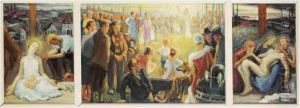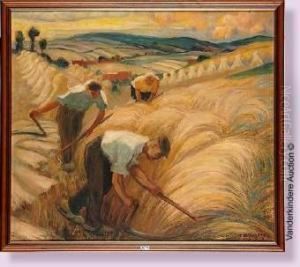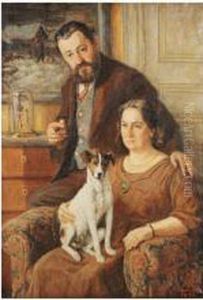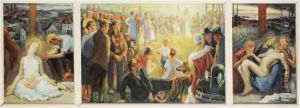Frans Nackaerts Paintings
Frans Nackaerts was a Flemish painter born in 1630 in Antwerp, then part of the Spanish Netherlands. Not much is recorded about his early life or training, but he is known to have been a landscape and genre painter, whose style was influenced by the great Flemish tradition that preceded him, as well as by contemporary Baroque trends. Nackaerts' work reflects the transition from the high Baroque to a more classical, serene aesthetic that was becoming popular towards the end of the 17th century.
Nackaerts was a member of the Guild of St. Luke, a typical association for artists of the time, which he joined in the mid-17th century. His membership in the guild indicates that he was a master painter and recognized by his peers for his skill. Despite his guild membership and the quality of his work, he did not achieve widespread fame during his lifetime, and as a result, his biography is not as well documented as that of some of his contemporaries.
The landscapes of Frans Nackaerts often depict rural scenes with small figures and are marked by a keen observation of naturalistic detail. They usually feature a sense of calm and balance, suggesting the influence of landscape painters like Jan Brueghel the Elder and Paul Bril. Nackaerts' genre scenes, on the other hand, show everyday life and are similar in style to the works of David Teniers the Younger, with whom he may have had contact.
Despite his artistic talents, Frans Nackaerts did not leave a large body of work. His paintings were not widely disseminated, and many have likely been lost or remain unidentified. He died in 1694 in Antwerp, and while he is not as well-remembered as some of his peers, his work still provides valuable insight into the evolution of Flemish painting during the 17th century.











